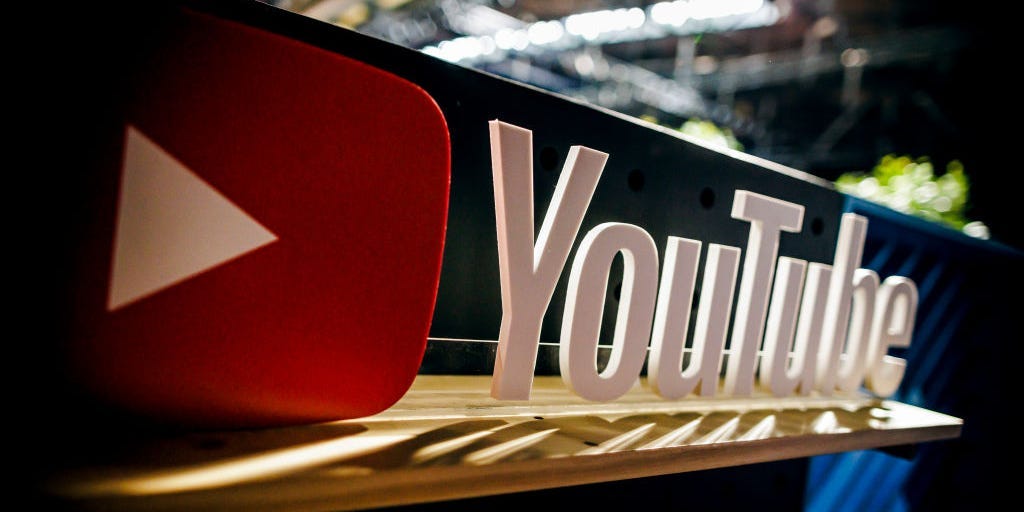YouTube, the biggest digital video platform by time spent, has long been trying to become a contender for TV budgets.
But now agencies say that after spending heavily with YouTube during the pandemic, their spending has slowed or is flat as new ad-supported streamers like Disney+ and Max give them more options.
One holding company exec said for the first time in years, their clients’ YouTube spending hasn’t increased this year. A second said their spending on YouTube has slowed after aggressive increases in recent years.
A third said YouTube is losing share to Disney+, Peacock, and Paramount. “Is YouTube taking its fair share?” the third exec said. “I would say probably not, because of all the different places we have to shift our dollars now. We don’t need to buy YouTube for scale anymore.”
The ability to find scale elsewhere will grow significantly next year when Amazon will begin selling ads on Prime Video, adding an estimated 115 million viewers to the ad supply.
Execs also cited suitability of YouTube content as an ongoing factor in their spending allocations. YouTube’s user-generated content continues to concern big brands that insist on more quality control, while other streamers say they guarantee a low-risk environment for advertisers.
YouTube’s reputation got renewed attention in June when advertising analytics company Adalytics shared research showing Google violated its standards when it ran advertisers’ video ads on other websites. Google said at the time that many of Adalytics’ claims were inaccurate. A subsequent Adalytics report alleged YouTube served ads that may have led to improper tracking of kids online; Google also disputed that report.
Finally, ad buyers say advertisers have become fed up with Google’s dominance of the ad ecosystem (which is now under antitrust scrutiny) and those that are eager for alternatives to park their dollars can find them.
YouTube benefited when the Hollywood strikes shut down TV productions, leading advertisers to look for alternatives to network TV, and streamers were still building their ad supported viewership, said internet analyst Dan Salmon, partner at New Street Research. But at least in the short term, he said, YouTube will face industry-wide pricing pressure because of the increase in TV-like ad inventory.
Brian Albert, managing director of US Video for Google//YouTube, countered that the ad marketplace has always been competitive but that YouTube dominates when it comes to viewership and audience reach. He also cited a study conducted by Google and eye-tracking research company Eye Square that found ads featured in creator-produced content deliver improvement in brand perception that’s on par with broadcast-produced content on YouTube.
“It’s not to say it’s 100% green, but most buyers and clients have acknowledged that quality is in the eye of the beholder and what matters most is where you and I choose to spend our time versus any legacy definition of what premium means based on a daypart or premium actors in a show,” Albert said.
YouTube has had TV growing pains despite its dominance with young viewers
It’s true that YouTube as a whole still has massive advantages over other streamers in size, cost, and dominance with young viewers.
It had the most hours viewed: 9% of streaming viewing in September, followed by Netflix (7.8%), Amazon and Hulu (3.6% each), according to Nielsen. YouTube’s revenue rose year-over-year in the past two quarters after three quarters of decline.
YouTube for years has leveraged this audience to compete for big brands’ TV ad budgets, and has launched products that promise a more premium viewing experience. YouTube TV, launched in 2017, provides linear and on-demand programming, and parent Alphabet has called it a bright spot for subscriber growth. YouTube also pitches TV advertisers on YouTube Select, which lets advertisers run ads on the top 5% of its most popular programming. And last year, YouTube reached a deal to make NFL’s Sunday Ticket games an add-on for YouTube TV subscribers.
Some advertisers quibble that YouTube is including creator-made video in their Sunday Ticket buys, which they consider lesser than actual live game footage, though. In one report for a campaign nearing completion, seen by Insider, about 40% of impressions delivered on a Sunday Ticket buy came from user-generated video and clips from accounts like JayWillySilly, budleewiser, and MLB Hot highlights 2023, instead of live NFL games.
And while YouTube Select can cost less than other streaming ad options, its MrBeast and other creator-led fare lacks the sheen that premium streamers like Disney+ and Max have. To some advertisers, right or wrong, that’s another reason to stay away.
Albert said YouTube made no guarantees about how the Sunday Ticket inventory mix would look and that it was clear to advertisers that they would be buying across both types. Even so, he said, more than 80 advertisers have bought Sunday Ticket from YouTube and “our clients are very, very happy” with it.
As for creator content in general, he said YouTube was committed to its model of funding creator content, which he said ensures hits get continually produced. “That’s a massive difference between the legacy studio-produced model where you hope you get enough hits to sustain viewerships,” he said. “When the streaming story is told in the future, this is going to be the pivotal issue that gets explored.”
Ad buyers have noticed signs that YouTube is aggressively trying to juice TV revenues. At the end of the 2023 upfronts season, it tried to charge advertisers based on how many people reported they were watching YouTube on connected TV, as an alternative to buying based on Nielsen-verified audience data. Ad agencies successfully pushed back. Albert said YouTube was discussing when to bill advertisers based on co-viewing, saying “it’s always been a bit fluid based on the market feedback.”
“The scramble felt to me like, ‘Oh God, we’re not growing the way we should.’ It told me there’s some desperation going on,” one of the agency execs said. Agencies are used to hearing from ad sellers ahead of the spring upfront selling season, but YouTube sales execs have been reaching out to agencies even earlier than the norm.
While YouTube’s TV revenue is nowhere near as big as it’d like it to be, adding Sunday Ticket and prestige content like it will go a long way, said advertising industry analyst Brian Wieser of Madison and Wall, who consults to clients across the ad industry.
“In the eyes of many advertisers, it’s just not comparable because it’s all cats on skateboards,” Wieser said. “The more programming that’s like that, the more they can have a conversation with advertisers.”
Ryan Joe contributed reporting.
Read the full article here





